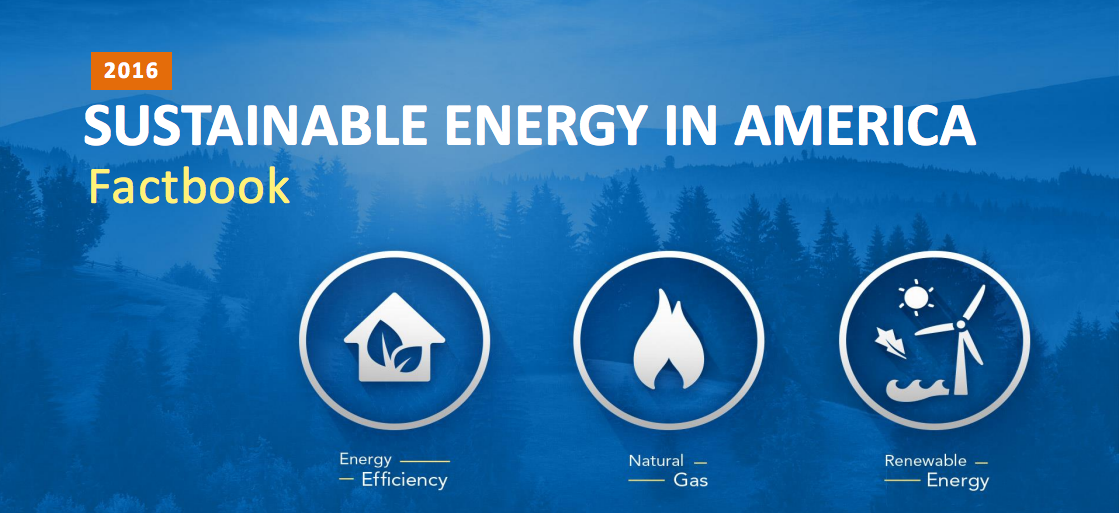
Last week, Bloomberg New Energy Finance (BNEF) and the Business Council for Sustainable Energy (BCSE) released their fourth annual “Sustainable Energy in America Factbook.” If there’s a new theme connecting the many energy facts in the 2016 edition, it’s “staying power.” According to Colleen Regan, Senior Analyst, BNEF, and co-author of the 158-page report, “Last year was certainly one for the history books: U.S. power sector carbon emissions fell to their lowest annual level since the mid-1990s. Perhaps most importantly, many of the key changes seen in 2015 are likely permanent shifts, rather than temporary adjustments due to one-time events.”
The 2016 Factbook has numbers like these to support this conclusion:
- American energy productivity increased by 13% from 2007 to 2015, showing the dividends for the U.S. economy paid by energy efficiency investment.
- Renewable energy is now 20% of the U.S. power generating fleet, with 222 GW of installed capacity across the country, a 57% increase over 2008 levels.
- Natural gas production, consumption, flows to power generation and volumes into storage all hit records in 2015.
- U.S. investment in natural gas, renewable energy, and energy efficiency – all components of advanced energy – reached $56 billion in 2015, up 8% from 2014.
- Together, renewable energy and natural gas generated more than 45% of U.S. electricity in 2015.
At Advanced Energy Economy, we are seeing many of these trends not only in investment but also in ongoing revenue. We will have more to say on March 3 when we release our “Advanced Energy Now 2016 Market Report,” which will cover five years of revenue across the entire advanced energy industry, in the U.S. and worldwide. Last year’s market report showed advanced energy revenue at nearly $1.3 trillion globally and about $200 billion in the U.S., more than the airline industry and equal to pharmaceutical manufacturing.
The Factbook’s summary notes important recent policies that AEE has also reported will drive this shift to cleaner energy sources and open markets for advanced energy technologies:
- U.S. EPA’s Clean Power Plan, which was finalized last year
- Signing of the “Paris Agreement” at the U.N. Conference of Parties by 195 countries, with periodic “check-ins” to reassess and strengthen commitments to emission reduction, much of which can be accomplished using advanced energy technologies
- Key tax incentives for some advanced energy technologies were extended by the S. Congress.
- Supreme Court upheld FERC authority to regulate demand response in wholesale electricity markets.
Any way you slice it, the facts are showing that, with 52 Advanced Energy technologies at work today, we are improving the way we make, manage and use energy.
